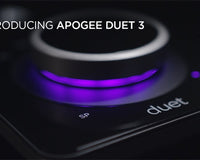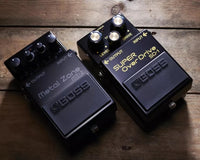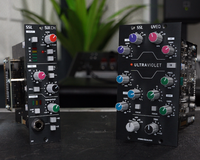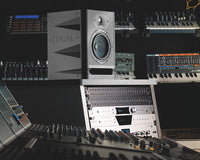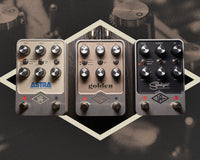What is the difference between a condenser mic and a dynamic mic?
Condenser microphones and dynamic microphones have fundamental differences in the way they are designed to convert sound waves to electric signals. These differences result in dynamic mics and condenser mics having distinct character traits that make them particularly well-suited for certain applications.
Dynamic Microphones
Dynamic mics have a voice coil (a small coil of wire) attached to the rear of a diaphragm. Sound waves in the air vibrate the diaphragm, which causes the voice coil to move within a magnetic field created by a permanent magnet. The motion of the voice coil in the magnetic field generates an electric signal corresponding to the sound waves picked up by the microphone. Dynamic microphones have a rather simple design which makes them relatively inexpensive to manufacture. They offer excellent sound quality and generally good specifications in all areas of microphone performance. They are not affected by extremes of temperature or humidity and they have exceptional handling of high sound levels. These traits make dynamic mics ideal for use in live sound situations. However, they have slower transient responses, and an uneven frequency response, which make them less desirable for recording.
Condenser Microphones
Condenser microphones have a diaphragm mounted just in front of an electrically-charged backplate. When the backplate is charged, an electrical field is created between the diaphragm and the backplate, proportional to the spacing between them. Sound waves vibrate the diaphragm, which changes the spacing relative to the backplate. This motion produces the electrical signal corresponding to the sound waves picked up by the microphone. The design of a condenser microphone requires a method of maintaining the charge on the backplate. This is most often provided by an external phantom power supply, although some designs may be battery powered. Condenser mics are more complex and more expensive to produce than dynamic mics. They are also more susceptible to extremes in temperature and humidity and have lower sound pressure handling. These traits make them less desirable than dynamic mics for live sound applications. However, condenser mics can be made with higher sensitivity and can provide more accurate sound reproduction. It is much easier to create a condenser mic with a flat frequency response and an extended frequency range. This makes them particularly well-suited for use in recording situations.
Condenser Microphones vs. Dynamic Microphones

Tags: Shootouts

